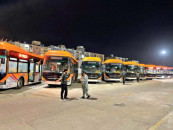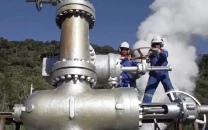Flood's economic cost
Agriculture remains a cornerstone of Pakistan's economy

Punjab is grappling with one of the most destructive flood events in recent years, with more than 1.3 million acres of farmland submerged along the eastern rivers. As per the preliminary estimates, the deluge has inflicted severe damage on Kharif crops, particularly cotton, threatening the livelihoods of millions of farmers. Satellite imagery of 24 districts within the command areas of the Sutlej, Ravi and Chenab rivers reveals that around 3,661 square kilometers or nearly 4.7 per cent of the total land area remained under water weeks after the peak flooding. Key cash crops such as rice, sugarcane, corn, vegetables and cotton have been devastated.
As per Kissan Board Pakistan, farmers sustained losses to the tune of Rs536 billion due to damage to the cotton, rice, sesame, maize and fodder crops. These figures are based on preliminary assessments and could rise further, potentially reaching Rs1 trillion i.e. roughly 4 per cent of the agricultural GDP.
Agriculture remains a cornerstone of Pakistan's economy, contributing 23 per cent to the national GDP and 19 per cent to overall gross output. The sector's output multiplier is estimated at 1.43, meaning that a 1 per cent increase in agricultural input generates a 1.43 per cent rise in output underscoring its strong linkages with the wider economy. Private consumption expenditure on agricultural goods accounts for about 12 per cent of total household spending, making it the fourth-largest category of consumer expenditure. The sector is also a major source of employment, with 37.4 per cent of the country's labour force engaged in farming and related activities.
It is estimated that production losses in the agriculture sector including both livestock and crop damages could range between 5 and 10 per cent of agriculture output. Such a contraction would have far-reaching consequences, given agriculture's crucial role in gross output and value addition. Using Leontief's input-output model, analysts estimate that a 5 per cent decline in agricultural production could translate into a gross output loss of nearly $4 billion and a gross value addition loss of $3 billion. This would amount to approximately 0.69 per cent of Pakistan's current GDP, underscoring the scale of the economic setback.
An input-output model illustrates how different sectors of the economy are interconnected by showing the inputs each sector uses to generate its output. Analysis of sectoral gross output losses indicates that agriculture will bear the heaviest impact, accounting for 82 per cent of total gross output losses and 84 per cent of gross value added losses. Several other sectors are also expected to face significant setbacks.
The food, beverages and tobacco sector may lose around 1.2 per cent of its gross output and 0.4 per cent of its value added. Retail and wholesale trade could experience a 6 per cent decline in gross output and an 8 per cent drop in value added. Similarly, the chemicals, rubber and plastics sector may lose 4 per cent of gross output and 2 per cent of value added.
The economic fallout from these losses is projected to reduce GDP growth by around 1 per cent. As a result, next year's growth is expected to remain between 1 and 2 per cent, accompanied by higher inflation and rising unemployment. In response, policymakers need to take urgent measures. The government should consider renegotiating its agreement with the IMF to secure relief on the provincial surplus targets and create fiscal space by cutting non-development expenditures. This would allow for greater investment in rebuilding damaged infrastructure. Timely support for farmers is also crucial.
Authorities should announce the wheat support price as early as possible, extend subsidies on farm inputs and provide interest-free loans to enable farmers to recover from their losses. Additionally, both federal and provincial governments should immediately increase budget allocations for social safety nets to protect vulnerable populations during this period of economic stress.















COMMENTS
Comments are moderated and generally will be posted if they are on-topic and not abusive.
For more information, please see our Comments FAQ